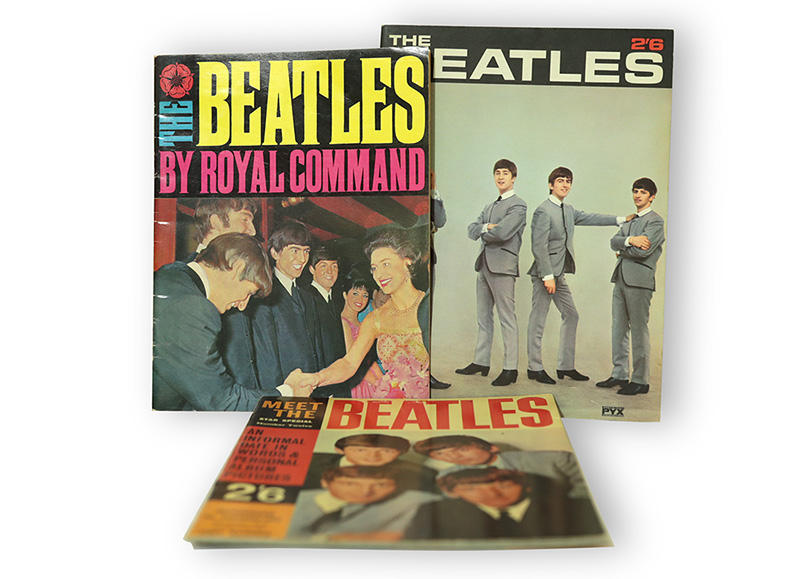08 Apr Archive: Early Beatles Promotional Magazines

Artifact:0005
These Beatles magazines, published during the bands prime in the 1960’s are a prime demonstration of how the methods of music promotion have evolved over time. Before the widespread use of television, magazines like this were used to show fans how their favourite artists really looked and worked.
Largely made up of photographs, the magazines show a carefully curated selection designed to promote an image of the artists. These ones in particular strengthen the aesthetical choices of The Beatles in their early days: neat suits, carefully cut mop tops and an overall sense of mod or teddy-boy style. Bio’s are also included for each member, detailing a short history of their early life and how they came to find their instruments and their place in the band, while avoiding mention of any kind of controversial incidents or opinions.
The magazines also act as a resource for early music journalists. Ritchie Yorke himself has notes in the pages selecting shots to be requested and subsequently licensed for his own articles. This allowed for a simple and expansive pool of promotional photography.
As print media becomes increasingly unpopular, particularly in specialised areas like music, it is evident how an artists Instagram page acts as its replacement, with well-curated photos that progress the aesthetic of the band or artist, details of upcoming appearances and performances, and the promotion of new music releases and merchandise. The social media also acts as a resource for journalists, allowing bands more control on what they’d like to see published.
There are significant differences however. While magazines are carefully curated by the publisher, the record label and sometimes the band itself, new social media shows more and more musicians in charge of their own social media, particularly in the early stages of their career. This can be a positive change, as we now can engage with the real musicians, while simultaneously allowing artists to publicly advocate for other musicians they support or charitable causes. On the flipside, this artistic control could also be detrimental to musicians if their posts are considered offensive or obscene.
The other primary difference is in terms of monetisation. These magazines would certainly have contributed to the income of popular musicians in a fairly steady revenue stream, whereas social media leaves little clear opportunity for financial gain. This leads to some of the changes between the formats, where social media is more so than ever focussed on the promotion of live shows and merchandising as opposed to simple performance shots and album promotion, another facet of the music industry that has fast deteriorated in terms of profits.
While we can no longer go down to the store and buy a magazine focussed on our favourite band, we can see that the evolution to social media allows us much of the same experience. While many could make the case for the more meaningful physical items, social media is overall a more inclusive platform as it doesn’t require money beyond the price of internet access. Overall these magazines demonstrate how the music industry evolves and adapts alongside the technology, and in future we will almost certainly see new and exciting models for music’s promotion.


